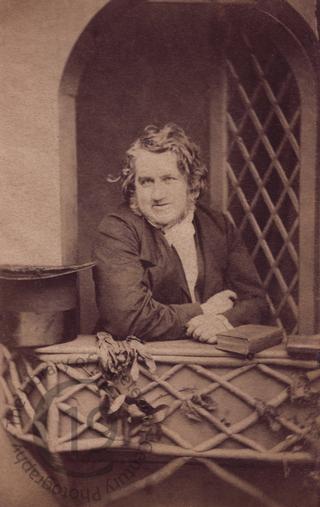
James Young Simpson
A carte-de-visite portrait of the Scottish obstetrician James Young Simpson (1811-1870). An important figure in the history of medicine, Simpson discovered the anaesthetic properties of chloroform and successfully introduced it for general medical use. He was a very early advocate of the use of midwives in the hospital environment. Many prominent women also consulted him for their gynaecological problems.
Educated at the University of Edinburgh, he completed his final examination at the age of 18 but, as he was so young, had to wait two years before he got his license to practice medicine. At the age of 28 he was appointed Professor of Midwifery (which would now be called Obstetrics) at the University of Edinburgh. He improved the design of obstetric forceps that to this day are known in obstetric circles as 'Simpson's Forceps' and he fought against the contagion of puerperal sepsis. His most noted contribution, however, was the introduction of anaesthesia to childbirth.
Simpson was appointed a physician to Queen Victoria and in 1866 he was created a Baronet, of Strathavon in the County of Linlithgow, and of the City of Edinburgh. He died at his home in Edinburgh in May 1870 at the age of fifty-eight. A burial spot in Westminster Abbey was offered to his family, but they declined and instead buried him closer to home in Warriston Cemetery, Edinburgh.
Photographed by James Ross of Edinburgh.
Code: 125395




